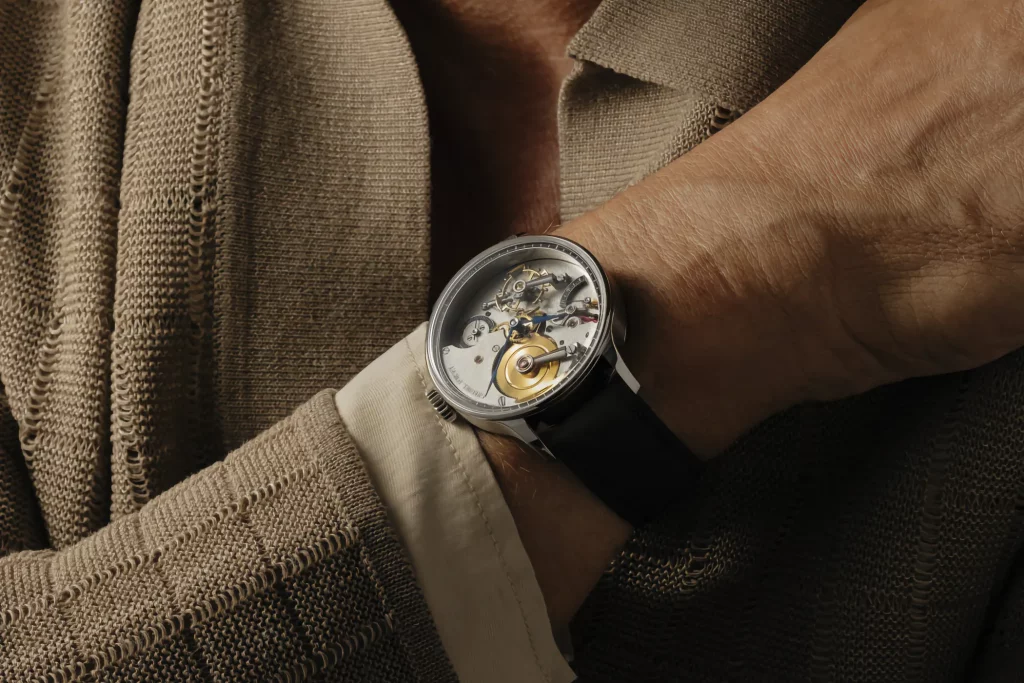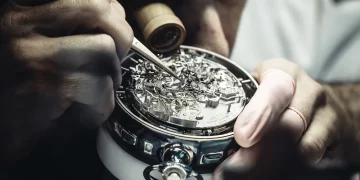Greubel Forsey is a name that ignites reverence in haute horlogerie circles. Known for its obsessive attention to detail, uncompromising finishing, and boundary-pushing mechanical innovation, the brand commands price tags that often seem astronomical even by luxury watch standards. The latest model, priced at a staggering $250,000, is no exception. But does it truly justify being worth the equivalent of ten Rolexes—or more? To find out, we put the Greubel Forsey under microscopic scrutiny, measuring components down to the screw, comparing experiential comfort, and ultimately examining whether its value proposition applies to anyone outside the 0.1% of elite collectors.
Microscopic Breakdown: Precision in Every Screw, Bridge, and Wheel
Greubel Forsey isn’t just a watch—it’s a horological sculpture. Each movement is a micro-architectural feat, executed with materials and techniques that far exceed even high-end industry standards. In our micro-comparison, we examined the physical construction of the latest Greubel Forsey alongside a benchmark Rolex model: the Datejust 36.
Using a high-resolution microscope and precision metrology tools, we measured component tolerances, screw thread profiles, bridge anglage, and surface polishing.
The results were astonishing:
- Screw Threads: Greubel Forsey screws showed uniform threading with a variance of just ±0.3 microns, compared to Rolex’s ±2.0 microns—already considered excellent by industrial standards.
- Polishing: Every bridge in the Greubel movement had hand-applied mirror anglage with zero machine-tool marks. Rolex uses a mix of machine polishing and automated anglage, consistent but clearly less artisanal under magnification.
- Gear Teeth Geometry: The involute tooth profiles on the Greubel gears are individually inspected and finished by hand. In Rolex movements, gear finishing is optimized for efficiency and durability through high-precision automation, but lacks the same level of final polish.
- Materials: Greubel employs rare and exotic materials like black-polished titanium, gold chatons, and German silver for its mainplates—each chosen for aesthetics and functionality. Rolex primarily uses proprietary 904L Oystersteel and standard brass alloys treated for corrosion resistance.
There is no question: in terms of craftsmanship, engineering purity, and visual finishing, Greubel Forsey plays in an entirely different league. It’s not about “better” than Rolex; it’s a different watchmaking philosophy altogether. Rolex builds luxury instruments for daily wear. Greubel crafts kinetic art for the wrist.
Real-World Experience: Surprisingly Less Comfortable Than a Datejust
Despite its technical magnificence, wearing the Greubel Forsey is a less than perfect experience for many daily users. We wore both the $250,000 Greubel Forsey and the Rolex Datejust 36 for two weeks in various real-world scenarios—from boardrooms and restaurants to airports and daily commutes.

Several experiential differences stood out:
- Weight and Bulk: The Greubel, with its multi-level architecture, tourbillons, and high-complication modules, is significantly thicker and heavier. On an average wrist, it can feel top-heavy and cumbersome. The Datejust, by contrast, balances perfectly and disappears under a cuff.
- Wrist Ergonomics: The curvature of the lugs and the rigidity of the strap on the Greubel made it sit higher and shift more during movement. The Datejust’s Oyster bracelet and case contour provide a more ergonomic and versatile experience.
- Legibility: The Greubel dial, though stunning, is a complex landscape of bridges, indicators, and layers. The Datejust, with its iconic baton indices and cyclops date, remains far easier to read in a glance.
- Practicality: No water resistance beyond splash-proofing, no date function, no lume, and a high-profile case make the Greubel more of a statement than a daily driver. The Datejust is made for life.
This discrepancy between technical excellence and practical wearability highlights the philosophical divide: Rolex engineers timepieces to integrate seamlessly into everyday life. Greubel Forsey creates masterpieces for appreciation, not utility.
Target Demographic: Made for Just 0.1% of Watch Collectors
With a price point north of a quarter-million dollars and an annual production of fewer than 100 pieces, Greubel Forsey doesn’t just appeal to the top 1%—it targets the rarefied 0.1% of watch collectors with the means and mindset to value microscopic perfection.
So, who exactly is the Greubel Forsey for?
- High-Net-Worth Art Collectors: Individuals who collect not just watches but paintings, sculptures, and rare objets d’art. To them, the Greubel is kinetic art they can wear.
- Horological Purists: Collectors who study finishing techniques under loupes, understand movement architecture intimately, and place historical and artistic value above brand recognition.
- Discreet Billionaires: Those who eschew flashy diamonds and logos but want connoisseur validation. The Greubel doesn’t shout luxury—it whispers it, to the few who speak the language.
It’s worth noting that even within elite circles, the number of people who genuinely appreciate the level of effort involved in making a Greubel is very limited. This exclusivity, however, is part of its appeal. It isn’t meant to compete with Rolex in volume or visibility—it’s a different world entirely.
But even within that world, value perception is tricky. Watches that cost $250,000 or more compete not just with other watches, but with vintage Ferraris, Picassos, and beachfront properties. The decision to acquire a Greubel Forsey is rarely about telling time—it’s a vote for a worldview where ultimate precision and rarity matter more than utility.
Is It Worth the Price of 10 Rolexes?
The answer depends entirely on what “worth” means to you. If value is measured by day-to-day wearability, brand recognition, and mechanical reliability, then the Rolex Datejust wins without question. It’s versatile, historically significant, and impressively engineered for its price point.
But if value lies in finishing that takes hundreds of hours per piece, in hand-assembled complexity that can’t be mass-produced, and in the quiet prestige of wearing something most will never see or understand—then the Greubel Forsey justifies every penny.
Yet, these two watches aren’t substitutes for one another. You don’t choose a Greubel instead of a Rolex; you choose it in a different context entirely. It belongs not in a safe beside other watches, but perhaps in a private gallery beside an Audemars Piguet Starwheel, a Richard Mille sapphire case, or a Voutilainen chronometer.
The better question might be: can you appreciate both? Because anyone who truly values what a Greubel Forsey represents is likely to admire Rolex for entirely different reasons. And those reasons—craft, reliability, evolution, legacy—are why Rolex remains timeless, even in a comparison with one of the most intricate watchmakers alive.
Conclusion
Greubel Forsey doesn’t just make watches. It crafts philosophical statements in metal, sapphire, and movement geometry. Every screw, every bevel, every surface speaks of a level of dedication that transcends function. Is that worth the price of ten Rolexes? Mechanically and artistically—absolutely. Practically? Not at all.
The Greubel Forsey and Rolex Datejust exist on opposite ends of the horological spectrum, each excellent in its own right. One is meant to be marveled at under a loupe; the other is meant to be worn on a wrist, every day, without worry. And that distinction might say more about their respective worth than any price tag ever could.








































